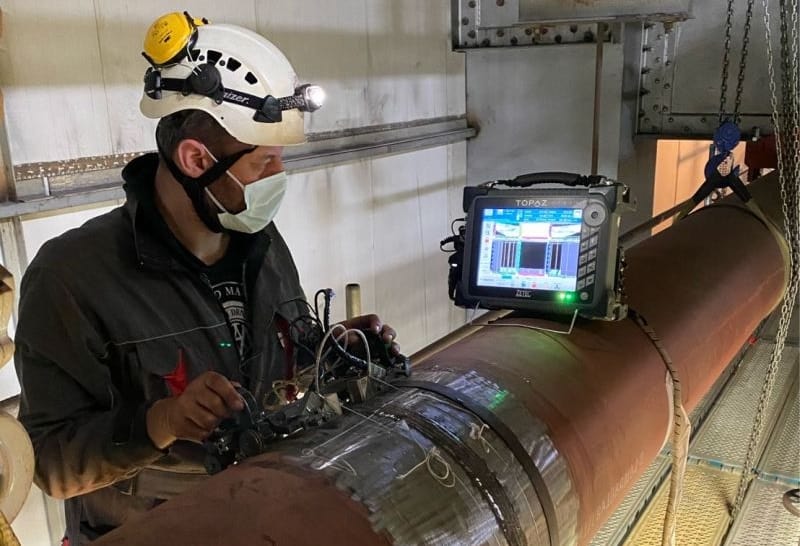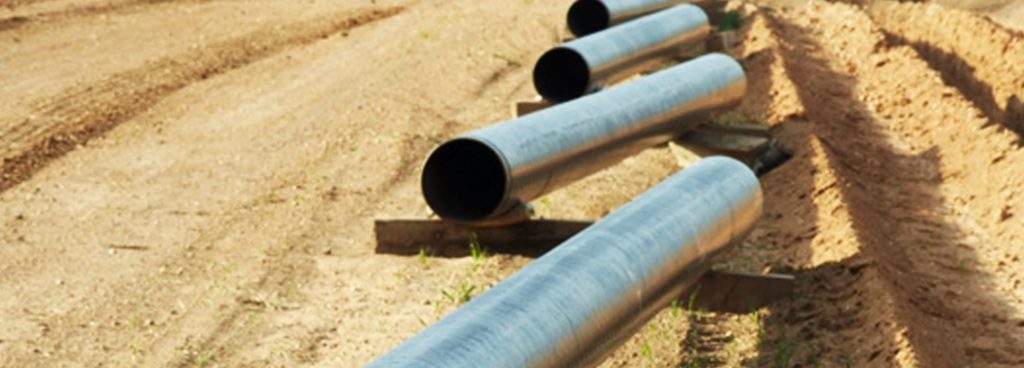Maximizing Effectiveness: Pipe Welding Assessment Best Practices
By applying finest methods for pipeline welding inspection, organizations can enhance processes, decrease mistakes, and enhance job timelines. The careful attention to information required in welding examination holds the crucial to the lasting longevity and dependability of the pipelines, making it a topic of utmost relevance in the sector.

Value of Efficient Welding Evaluations
Reliable welding examinations play an essential duty in guaranteeing the structural stability and safety of pipelines. Correct examinations are vital to identify any flaws, stoppages, or blemishes in the bonded joints that could compromise the overall integrity of the pipeline system. By carrying out detailed assessments, examiners can identify problems early on, avoiding possible leaks, ruptures, or failures that could have major ecological and safety and security effects.
Precise and prompt welding examinations also assist in preserving conformity with sector criteria and policies. Sticking to these standards is not just a legal demand however likewise a required procedure to assure the reliability and long life of the pipes. Efficient assessments can contribute to cost savings by reducing the requirement for costly repair work or substitutes due to welding issues that might have been stopped or fixed throughout the inspection procedure.
Making Use Of Modern Technology for Examinations
To enhance the effectiveness and accuracy of pipe welding evaluations, the assimilation of sophisticated modern technologies has become progressively vital in making certain complete and precise analyses of welded joints. One of the crucial technical developments in pipe welding assessments is the usage of automated ultrasonic screening (AUT) systems. By accepting these technological options, pipeline welding inspections can be carried out more successfully, leading to higher top quality welds, boosted overall safety, and reduced task timelines.
Developing Clear Inspection Methods
Developing clear inspection methods is essential for making sure consistency and dependability in the pipe welding examination process. These procedures offer as a set of guidelines that detail the specific actions, criteria, and approaches to be adhered to during evaluations. By plainly specifying the evaluation methods, all examiners associated with the process can understand their responsibilities and functions, leading to a much more reliable and standard inspection workflow.

Routine testimonial and updates to the examination procedures are also critical to adjust to altering industry standards and requirements. By continually refining and enhancing the protocols based upon comments and lessons learned, pipeline welding examinations can promote the best standards and regulatory compliance.
Training and Accreditations for Assessors

Educating and certifications for inspectors are vital in guaranteeing the capability and efficiency of people entrusted with managing pipeline welding procedures - Pipeline Welding Inspection. Properly trained assessors have the essential expertise and skills to effectively examine weld top quality, adherence to welding procedures, and conformity with industry standards and regulations
Accreditations, such as those used by the American Welding Society (AWS) or the American Petroleum Institute (API), verify an assessor's expertise and ability to execute examinations to the highest possible criteria. These accreditations usually require extensive training, assessments, and continuous specialist advancement to make sure that inspectors remain existing with the most up to date innovations in welding modern technology and evaluation methods.
Along with official accreditations, constant training programs play a crucial role in enhancing examiners' capabilities. These programs cover a vast array of subjects, consisting of welding procedures, issue detection, safety methods, and relevant codes and standards (Pipeline Welding Inspection). By buying detailed training and certifications for assessors, companies can maintain the stability of their pipeline welding tasks and minimize the dangers connected with second-rate welds
Continual Improvement in Examination Processes
Building upon the structure of skilled and certified assessors, continuous enhancement in assessment processes is necessary for making certain the recurring high quality and conformity of pipeline welding operations. By carrying out a system of constant improvement, pipe welding inspection processes can advance to fulfill the original source the transforming demands of the market, technical advancements, and regulatory requirements. This entails on a regular basis examining and analyzing inspection tools, treatments, and methods to recognize locations for enhancement.
One secret element of constant renovation in examination procedures is feedback. Gathering input from inspectors, welders, engineers, and various other stakeholders allows for a detailed analysis of existing methods and the identification of possible locations for improvement. Additionally, leveraging data and analytics can supply beneficial insights right into the efficiency of examination procedures, making it possible for informed decision-making for optimization.
Moreover, buying training and growth programs for inspectors can ensure that they are equipped with the most up to date expertise and abilities to find execute their responsibilities successfully. Continual improvement is a dynamic process that needs commitment and commitment from all stakeholders to drive excellence in pipeline welding evaluation methods.
Verdict
Finally, making the most of efficiency in pipeline welding inspections is vital for making sure the high quality and safety and security of facilities projects. By making use of innovation, establishing clear methods, supplying appropriate training and certifications for assessors, and continuously boosting examination procedures, organizations can streamline their operations and decrease risks. It is necessary for markets to focus on reliable welding assessments to keep high requirements and fulfill regulatory needs.
Reliable evaluations can contribute to set you back financial savings by lessening the need for expensive repairs or substitutes due to welding flaws that might have been stopped or corrected throughout the examination process.
Establishing clear assessment procedures is important for guaranteeing consistency and reliability in the pipeline welding evaluation procedure. By plainly specifying the examination methods, all assessors entailed in the procedure can recognize their duties and duties, leading to an extra standard and effective inspection workflow.
Clear examination methods aid in minimizing the chance of errors or oversights during the inspection procedure.Building upon the structure of certified and trained inspectors, continual improvement in inspection procedures is more info here essential for ensuring the recurring high quality and conformity of pipe welding procedures.